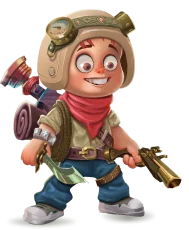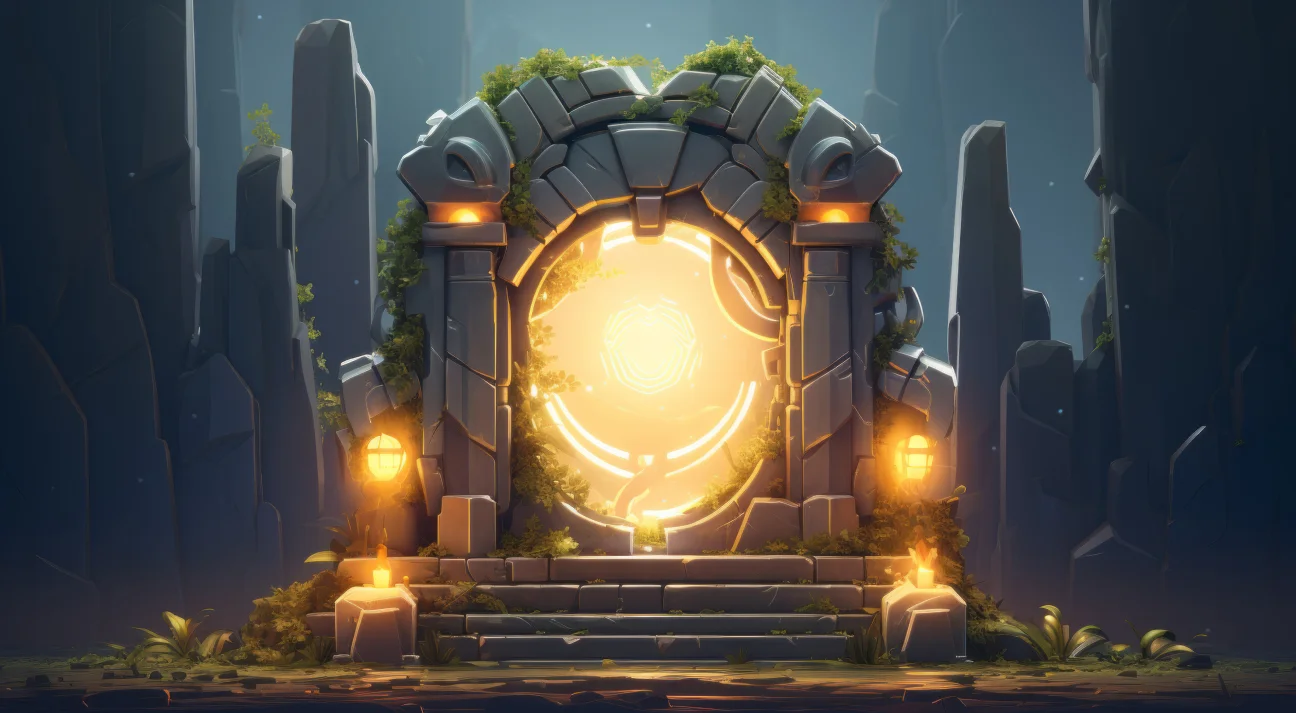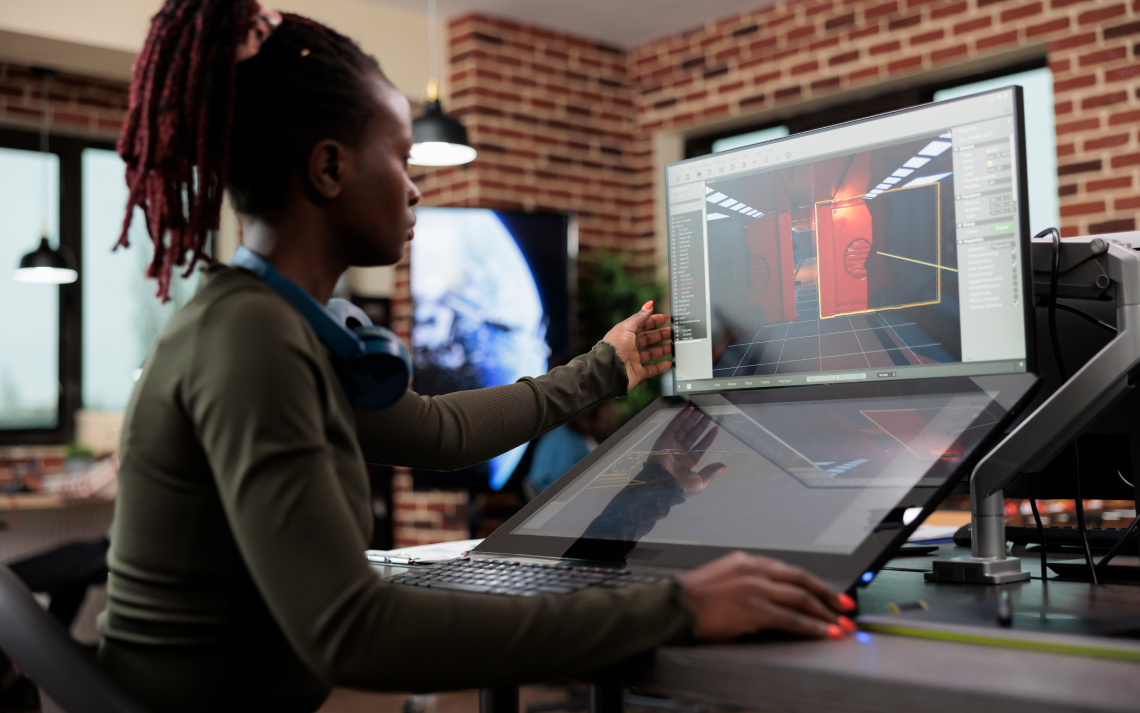
How to Design Engaging Game Art That Elevates Mobile Gaming Experience?
When designing a game, every game design artist should ask himself/herself this one question, “Why does everyone love to play games?” Or a revised question could be, “what compels everyone to play games ?”
It’s always graphics/visuals and effects – that live at the heart of a game, aren’t they?
The visual style depicts the tone of your game and sets benchmarks for players’ commitment to the game. Hence, your game’s visual aesthetics should take your game design in a much more meaningful, storytelling, and creative way that elevates your gamers’ excitement level for the gaming experience to cloud nine.
And in the topic of the game, this visual aesthetics refers to “Game Art”, which is a prime stage in the game design process that can’t afford a single error.
That’s the main concern behind curating this guide for game art design with the help of game design experts at 300Mind.
Ahh…! Caught your excitement to dive into the ocean of game art design! So, let’s explore the matter of game art.
What Is Game Art Design?
The game art design is the core process of game development that creates artistic dimensions for video games. You can even call it a pre-production phase of a game design process, which covers all game elements, including the game world, characters, settings, props, etc.
Game designers – the game artists – create all these game concept designs before shifting these game pieces for the actualization – the development phase.
Some experts do call this game art design “programmer art” – involving more game artists and technical artists to convert the rough game element sketches into digital visuals.
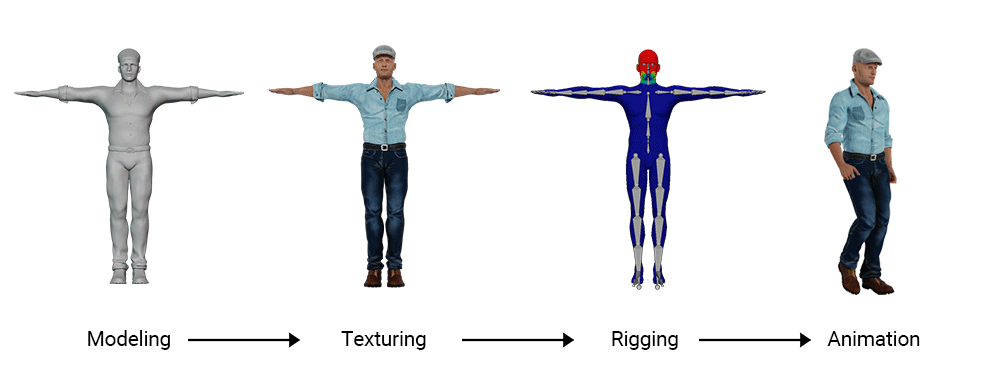
Source: 3D Character Modeling for Games
As the game design is a broad term, it includes two or more game artists creating different game visual elements as each artist based on specializations.
At 300Mind, we have a dedicated team of game artists with varying expertise in the game art design areas who can help you meet varying game conceptualization, design, and development requirements.
As the game art design covers so many aspects, it becomes necessary for you to know to not leave loopholes in your game artistic medium.
Video Game Graphics Terms To Know Before Getting Started With Game Art Design
Game design is itself an extensive process. Below are some primary game design terms that all game artists should know about:
1. Pixel
A pixel is a minute of an area or a tiny square of colored illumination on a digital screen that composes many forms of visuals.

2. Pixel Art
Pixel art is a type of 2D visual art that composes and renders pixels to animate the game characters; and thus, the whole game world. It cites early video game aesthetics that are highly praised and marketed by world-class video game console firms, including Super – Nintendo Entertainment System (S/NES) and Sega Genesis.
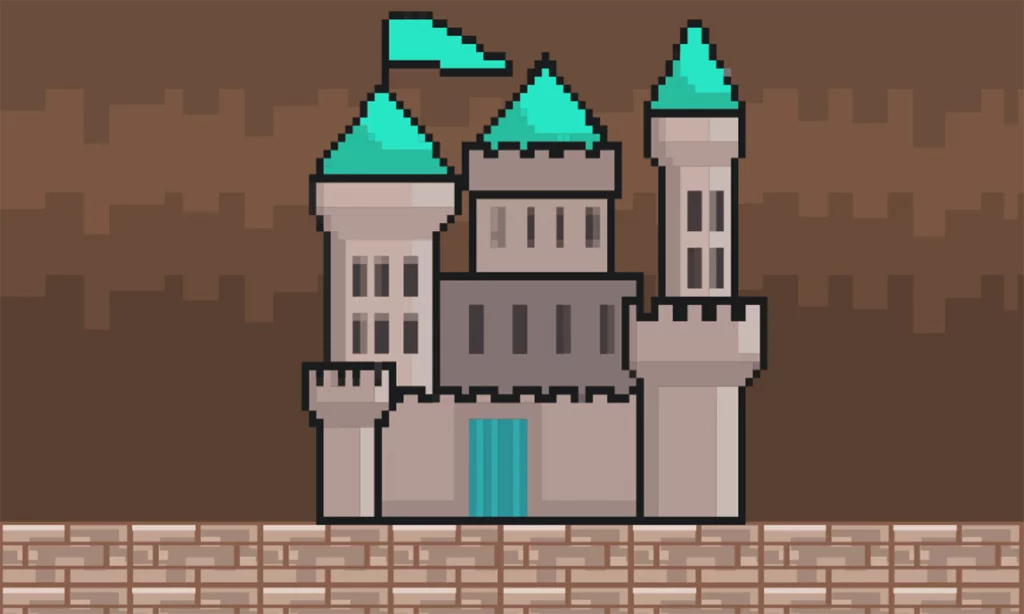
3. Low-Poly Design Art
Low poly is a composition of 3D polygon-based visuals with relatively fewer polygons per mesh (around 300+ polygons). Because of this characteristic, low-poly design arts are highly used in real-time scenarios (online games) – contrary to high-poly design arts that are being used in animated movies and videos with special effects.
Low-poly design arts are used in many famous games that we have played, and many people are still playing those games, including Subway Surfer, Clash of Clans, Temple Run, and most arcade games.
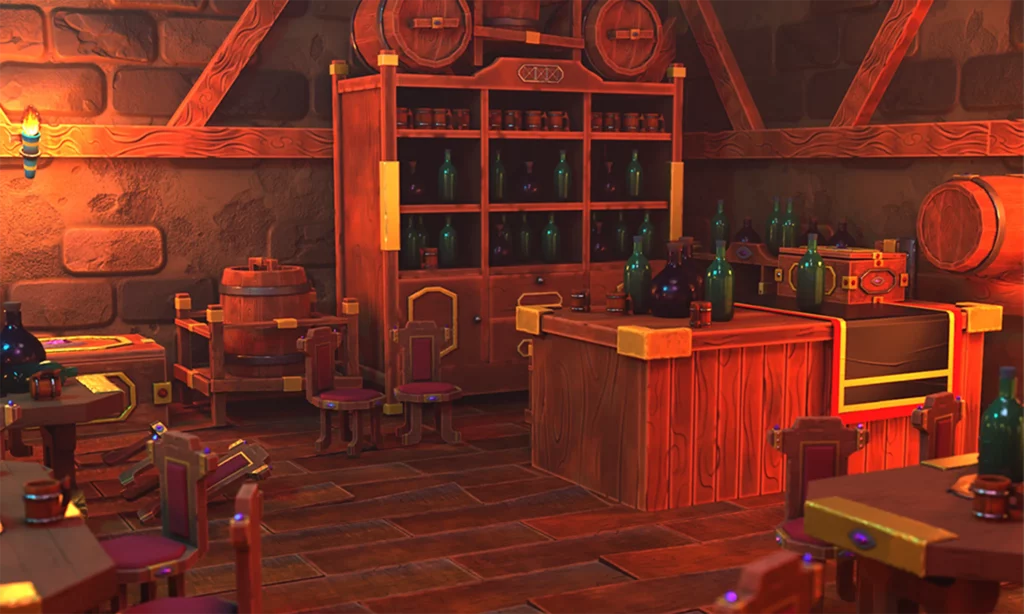
Source: Medieval Bar Interior
4. High-Poly Design Art
Simply put, high poly is a 3D visual art composed of high numbers of polygons per mesh (1000+ polygons for mobile games). This type of high poly mesh is also known as high-quality animation with more realistic and detailed structures.
Due to this, since inception, high poly design arts have been in high demand and widely used in AAA titles, games offering real-world-like scenarios (AR/VR games), etc.
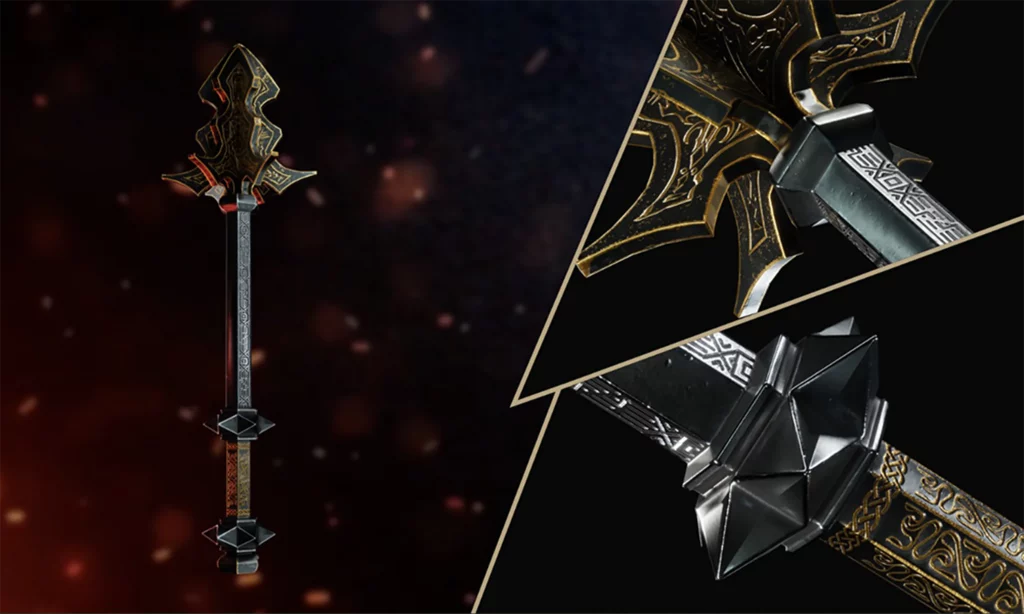
Source: Medieval Weapons
Now that you have basic knowledge of game art components, it’s appropriate to move to the process of creating the ultimate game art design.
Best Practices to Create A Compelling Game Art Design
If we see the design approach for video games, it changes with the type of games and the game system. It’s obvious that a game cannot directly go into development before the Game Art, which is created by doing tons of experiments for the game concept.
Here are the tips for creating game art that game visual experts use:
1. Pre-Production: The Game Concept Inception
It is evident that every product-based company is always in a hurry to launch its products into the market as soon as possible. But in order to meet such requirements, giving less priority to the game story inception process should never fall into the plan. Hence, you have to ensure to follow the proper process before jumping to the design part.
Competitor Research & Reference
Of course, as you’re planning to develop your dream game, you must have your game genre and future plans pre-decided. So, it’s time to do some competitor research on related game projects that are the best in the market.
For this moment, just collect references and highlight the best art features you like from their game art. This competitor analysis will help you figure out the good things to add and the unappealing game art style to avoid.
You can even learn about the preferences of your target game players from the research, using which you can create unique game art that your audience would love to explore.
A Strong Backstory
Whether it is a movie or a game, a strong backstory for the game world, characters, and plots play an important role in designing creative game art. This helps game artists to visualize further game art inspirations.
Game Concept Art Documentation
Once all the planning and brainstorming work for the game art design is done, it is always the best practice to document the video game concept with detailed 2D sketches of game elements.
However, the approach to creating a game concept art depends on the game artist, like whether to sketch it on paper first or directly experiment with the software – Autodesk Sketchbook.
2. Hire World-Class Mobile Game Artists
The game’s strategic planning is done, but you also need someone to execute your game design. And that’s where it creates a need for game artists.
Professional game artists to whom you’ll give your game concept art design project will help you accomplish the following tasks:
- Finalize the best-fit game art style for your game idea.
- Extensively collaborate with your game creative team to aid the visuals.
- Helps to anchor the game aesthetics with functionalities, which is highly advised for mobile game development.
Looking for the best game designers in India, then 300Mind Game Studio is the best-fit team of Game Artists and Developers that can prioritize to meet your game design and development requirements.
3. Delve Into the Mobile Game Art Design Principles
Usually, when designing a game for different devices, technical artists have to take care of many factors. And the slightest calculation mistake could create chaos in the game design to match up with the device compatibility and performance standards, especially for mobile games.
Visual Size
When creating a game object art for the mobile game, consider a large array of mobile screen types along with the visual size of objects (no. of pixels forming one object). This will help you balance the game screen visual size (pixel groups for objects – clarity) and the appearance of game objects as per the role priority.
The bigger the game object’s visual size is, the more texture space it would ask you to secure. And you probably don’t want to invest too much visual size on a game object that plays a tiny role or would require only limited pixels in the game world.
To understand this concept better, see the below screen art of the Clash of Clans game, which shows a world scenario with many soldiers who secure a limited number of pixels on the screen.
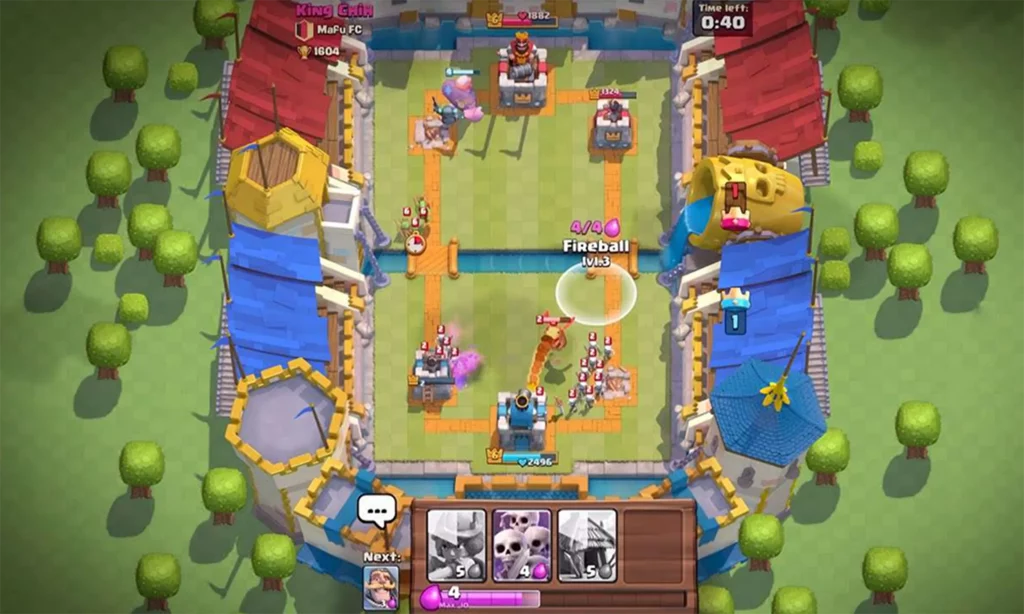
It fulfills a couple of roles:
- A small texture reduces memory overhead.
- A perfectly balanced texture enables you to visualize all important game objects in the game world map.
If you see the image below closely, you might discover the soldier with their triangle meshes. These low triangle countparts are pretty similar to texturing, playing an important role in reducing the GPU overhead during the triangle vertice rendering process.
Even though the object triangles secure a few pixels, they demand impressive GPU processing power. It helps GPU extensively in avoiding the micro triangle rendering issues.

So, the fewer the triangles, the less rendering effort it takes to process. Not just that, it also helps in maintaining the visibility of game objects when their size is small or they are at a far distance in the scene.
Game Art File Compression Type
When the game artists are done with the object texturing, they usually export the art into PNG, JPG, or TGA format. But at the time of game processing, all of these art texture files are converted into special, compact formats that are small in size and fast to load.
At the time of choosing an art compression file type, ensure to choose the format that renders quickly without compromising on the artistic quality of the design.
As a leading team of game artists with decade-plus years of experience, we highly recommend using ASTC (Adaptable Scalable Texture Compression) file type that uses varying block sizes to represent the art rather than a single fix-blocked size.
- For the most basic art assets, it is recommended to use a block size of 5×5 or 6×6.
- For the smaller assets, it is recommended to use a block size of 8×8 or 10×10 – that secures fewer screen pixels.
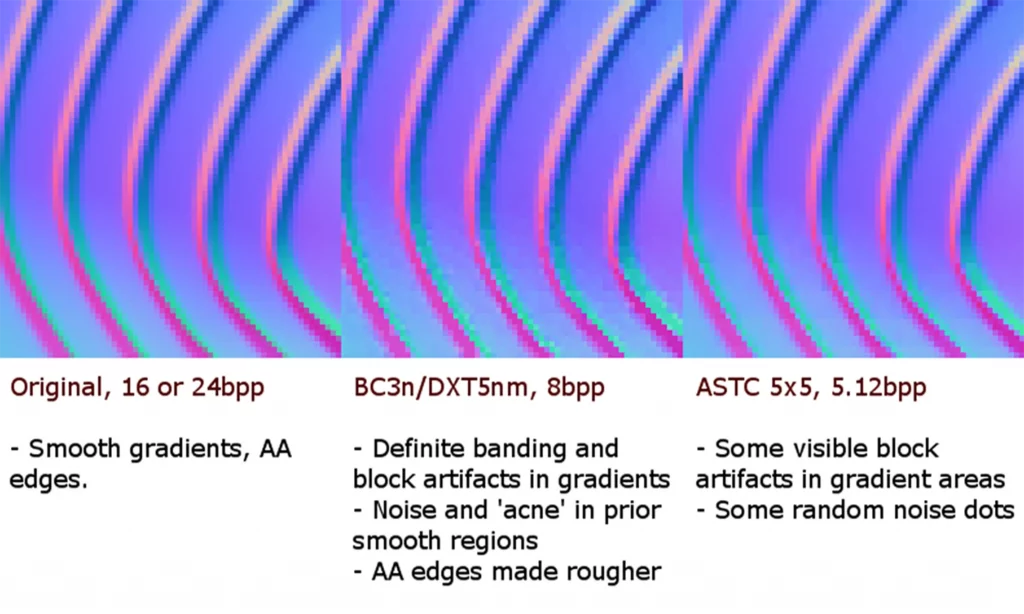
In some cases, we also recommend experimenting with different block-size settings to find the best art file representation configuration for the game.
Level of Detail (LOD) & Mip Maps
Now that we all know that the fewer vertices a game object has, the faster GPU rendering time it could offer. With the object’s visual sizes, it is also important to ensure its object form alike from a great distance as well as from close. And that’s where the Level of Detail (LOD) concept comes into the picture.
A LOD system designs objects in the low-poly model and generates its different models as it moves away from the foreground. Game artists create these object movement models while keeping the count of vertices of micro triangles with top-notch performance for both near and distance views.
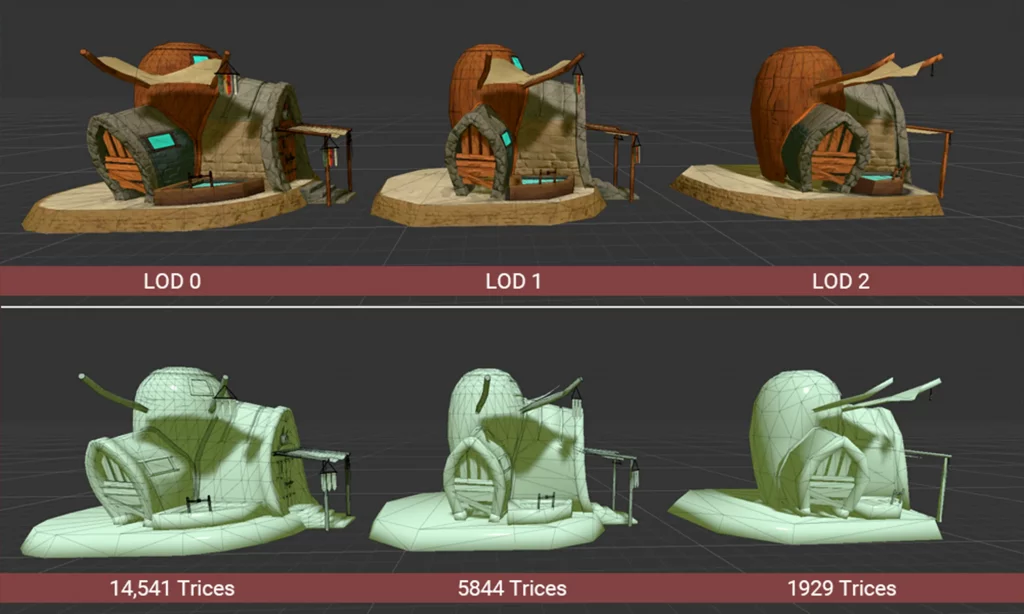
In order to improve the visual efficiency of LODs, you can even use the Mip Maps to flexibly scale up and down textures between LODs.
But what are Mip Maps in Game Art Design?
Mip Maps are the texture copies that save object LOD models at granular resolutions with details. So, whenever the game screen moves away from the object, it will directly render and replace with the smaller resolution model with a smoother page refresh rate.
In short, Mip Maps are applied on the objects with not so clear distance from the player’s focus game screen. Using Mips and LODs together will indeed boost the game screen rendering speed.
Optimize the Game Object for the Transparency
Rendering each transparent game element that overlaps the other game elements is expensive for all game systems.
When doing so, in the case of mobile screens, rendering transparency often leads to “overdraw” – where its GPU has to render the same pixel again and again to meet the characteristics. And this rerendering process directly affects the game performance, which is not good for players; and thus, business.
However, transparency in the game design and development is necessary. Hence, to use it intelligently in the design, you need to search for the efficiency available in the market.
Alpha Blend
Since the mobile GPUs have sufficient graphics optimization capabilities, alpha-blending the game objects is the highly recommended option. The reason is the Alpha blend enables artists to create different models with varying transparency rather than just turning graphic transparency ON/OFF as cutout offers.
There’s also another method to optimize the game object transparency level, which Alpha Tests. But as it makes the game transparent object completely transparent, like they were never in that space, it is often referred to as “Cutout”, which is not a recommended practice by industry experts.
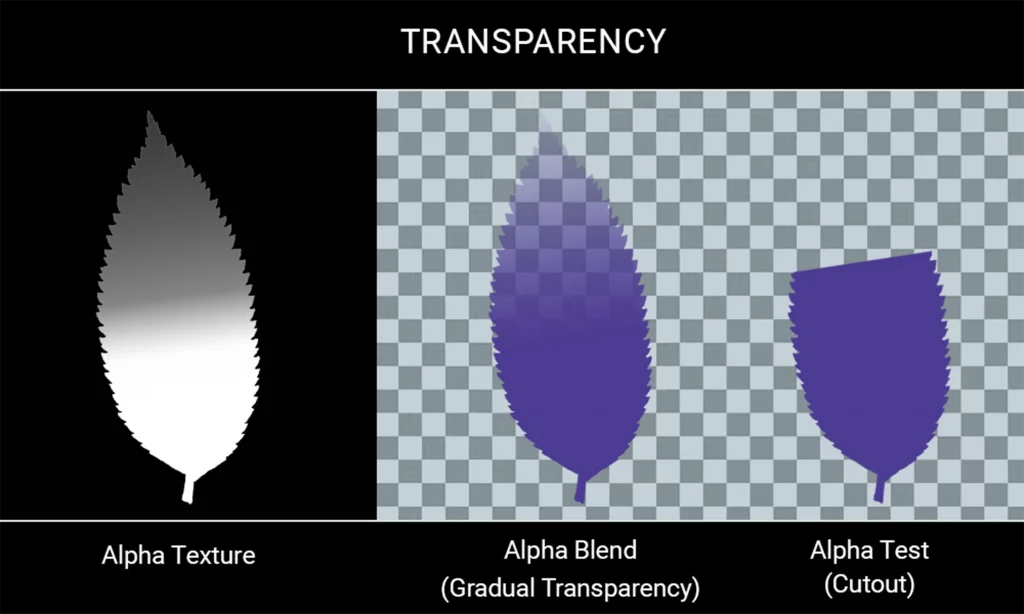
4. Create Art That Tells A Clear Story
“Let the art speak for itself” is the mantra that all visual mediums follow, including animated films, advertisements, TV shows, etc. Then why should mobile games stay away from this guru mantra?
Nowadays, the majority of digital users, including gamers, prefer to get all information by just looking at the graphics rather than reading a couple of text instructions. This creates a need for you to create information-aided gameplay.
Speaking of which, Subway Surfers reflects points to collect in an illuminated/super highlighted way so any user would get an idea to collect such. Also, when a new user starts the game, it shows actions to perform through guiding gestures. So, players can learn to play the game and the best game mechanisms from the very start without additionally watching any extensive user guide video or reading players’ gamecraft guide.
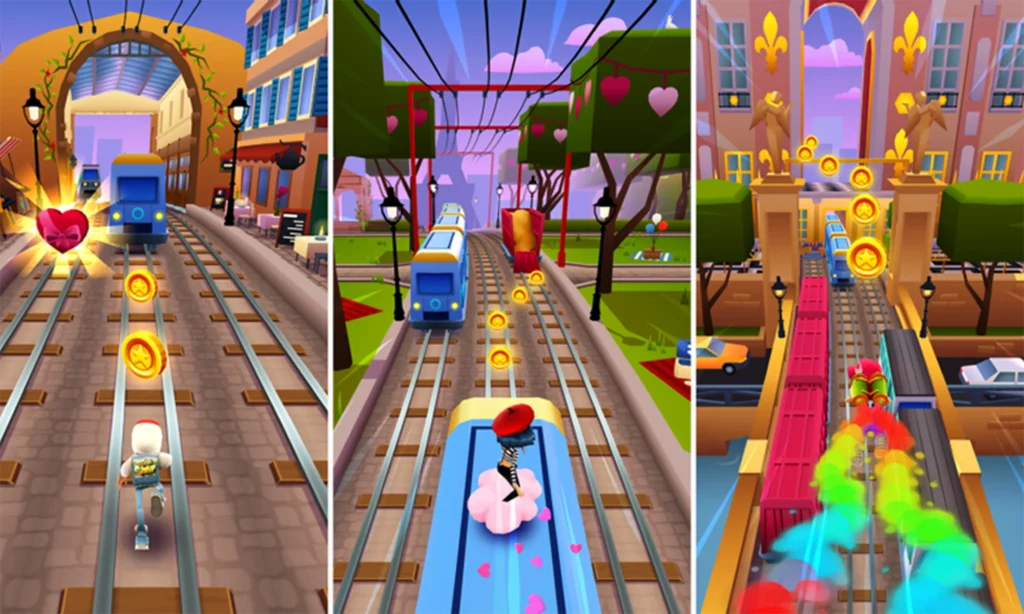
5. Appealing Appearance Matters
Games are for experience, and players come to play games to refresh their mood. Hence, as game artists, it falls into our responsibility to choose an appealing color scheme.
Not just the bold color scheme but also using shallow depths of field (Low f-number or f-stop, from 1.4 – 5.6 points) to effectively style the game nouns.
Just think and test your game animation choice to see how this choice impacts your psychology when seeing that effect in the game. And game designers should never underestimate giving preferences to the visual choices for the game because of the reason – the impact.
Note: While working on making the mobile game art appearance appealing, ensure not to use UX dark patterns.
6. Art Improvement is Necessary
Improvement is the nature of the world. In the tech world, settling down to one app version has never been an ideal option. With time, advancement in technology, and trends, each and every app present in the respective app store has to be up-to-date with UI UX design trends and technological advancements.
When speaking of game design and development, it becomes important to release new updates with upgraded game UI UX features, levels, performance optimization, security patches, etc. And the same applies to the game world.
Concept Art is the core part of the game design, which must be upgraded and optimized on time to meet players’ ever-changing game experience preferences.
Let’s take one example. In 2012, supercell launched Clash of Clans with that time’s art style. But over time, it has released many new versions with upgraded art style and performance to maintain players’ interest in the game.
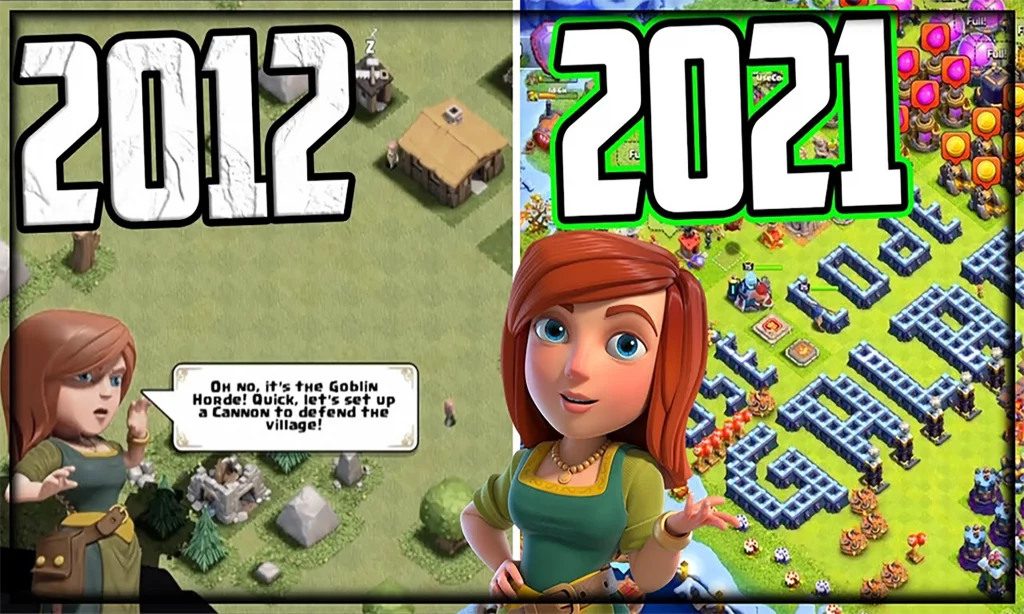
In your game versioning, the update can include anything – new game levels with more difficulties, introduce new characters and weapons, add new story extensions, improved art style, etc. For better ideas in the game improvement, take your players’ feedback continuously.
In short, your initial game art style shouldn’t have to be the last.
7. Game Art Responsiveness
Last but not least! Once the whole game art design part is done, always ensure to make it adapted to all screen sizes, including mobile devices, tablets, Laptop/PC screens, TV screens, etc.
Nowadays, the digital device market is full of varieties in terms of screens and performance, especially in the case of smartphones. With this availability of screen size varieties, you – as a game designer – have to make your game art responsive to all possible screen sizes.
Definitely, it can’t be done so easily! It would require tons of conceptualization of time, adjustments, and experiments. And with such effort investment, you will eventually meet your game art screen adaptiveness goals for all screens.
Hence, it’s better to invest much time – fixing loopholes than releasing the game with tons of pixel holes and diffusions.
Do you want to know how mobile games are created? Luckily, we have prepared an extensive guide on Mobile Game Design, which you probably don’t want to miss out!
How 300Mind Can Help You Create Game Art For Your Dream Game?
The game concept art design lives in the heart of our game artists, who always love experimenting with different art elements, like a 3D armory, characters, etc. 300Mind Studio is a proficient full-cycle game design and development company based in India, helping game companies to bring their game ideas to life, from game concept art design, environment design, motion, and animation, to the final game development with extensive testing.
Here’s the case study on our star game product – Bal Hanuman, which is entirely conceptualized, designed, and developed by game artists at 300Mind.
Visit our 300Mind Game Art Collection for better design references.
Want to hire our game artists for your dream game project? Contact our game design consulting team today!
FAQs On Game Art Design
People play games to refresh their moods and challenge their abilities. Hence, your game concept should have all bites to interest players, which includes rich game controls, rewarding experiences, intuitive game graphics, a strong storyline, intelligently strategic and full of surprises, and rising-level difficulties.
Cohesiveness is what defines a good example of game design, which is a perfect compilation of all granular design parts, along with different game aspects, together creating a wholesome game experience. A good game design isn’t limited to scribbles on paper but is more like a perfectly graphically implemented game.
When hiring a game artist, checking the artist’s design portfolio is a must, along with experience, to see their expertise in the design areas, whether they’re meeting your game design requirements or not. Apart from that, you also need to finalize certain hiring parameters from your side, including budget (project complexity, LODs, time frames), a list of assets, skill sets (2D & 3D art and animation, Concept Art, UI UX Design, etc.
